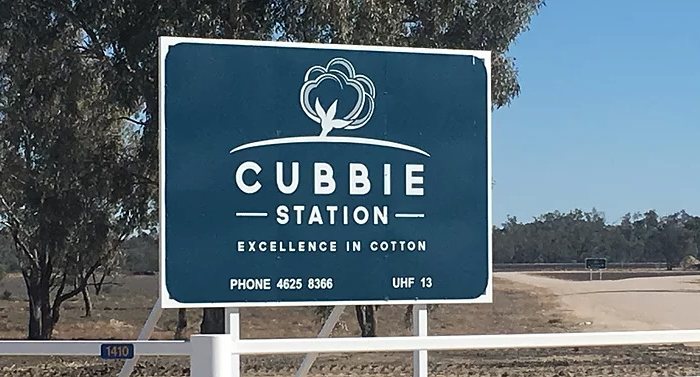
Image: Cubbie Ag
It won’t do anything about its controversial water use, but a large-scale solar power station at Cubbie Station will significantly reduce the cotton operation’s electricity consumption.
VivoPower Australian subsidiary Aevitas Group Limited has been awarded the contract for engineering design, procurement and construction (EPC) of the 3.6 MW Cubbie Solar Project near Dirranbandi in Queensland.
The solar farm will help power operations at the massive cotton farm owned by Cubbie Ag. The project will generate enough electricity to supply 40% of Cubbie’s energy requirements during the peak cotton ginning season, which runs from April to September.
Cubbie Ginnery was purchased in 2013 from Queensland Cotton to provide an integrated processing facility adjoining Cubbie Station. A ginnery is a facility where seeds are removed from cotton.
Construction of the solar farm is slated to commence in October 2018, with expected commercial operation by the end of this year – again demonstrating just how quickly major solar facilities can be constructed.
More solar power is on the cards for Cubbie, with another 3.6MW planned along with the addition of battery storage. Ultimately, Cubbie’s owners want to provide electricity to the nearby towns of Dirranbandi and St George.
Solar is great, but it doesn’t atone for all sins.
Cubbie Ag owns three cotton farms – Cubbie Station (80,000 hectares), The Anchorage (12,000 hectares) and Aspen (406 hectares). The total holding of 92,400 hectares feature 22,000 hectares of irrigated cropping fields. Cubbie Station is the largest irrigated property in the southern hemisphere and has water storage capacity of 537,000 megalitres – more than the volume held by Sydney Harbour.
Cotton is a fairly thirsty crop requiring 5.2 megalitres per hectare on average according to Cotton Australia. Fingers have often been pointed at Cubbie Station for issues facing the Murray-Darling river system. The cotton farm is apparently licensed to take 460,000 megalitres of water per annum from the Culgoa, which is part of the Darling catchment within the Murray–Darling basin.
The crop is also the target of many pests. According to the CSIRO, the use of genetically modified crops (Bt Cotton), a controversial topic in itself, has seen success in the control of Cotton bollworm (caterpillars of Helicoverpa – cotton’s main pest). This has led to an 85% reduction in insecticide use, but that has resulted in allowing other cotton pests to thrive. Helicoverpa is also becoming resistant to Bt cotton in some parts of the world.

 RSS - Posts
RSS - Posts



While the solar array won’t reduce water use by the farm, it will reduce the amount of coal consumed and that will save water that would have been used mining and washing coal and by thermal generation. So still good from a water use point of view.
Congratulations to VivoPower